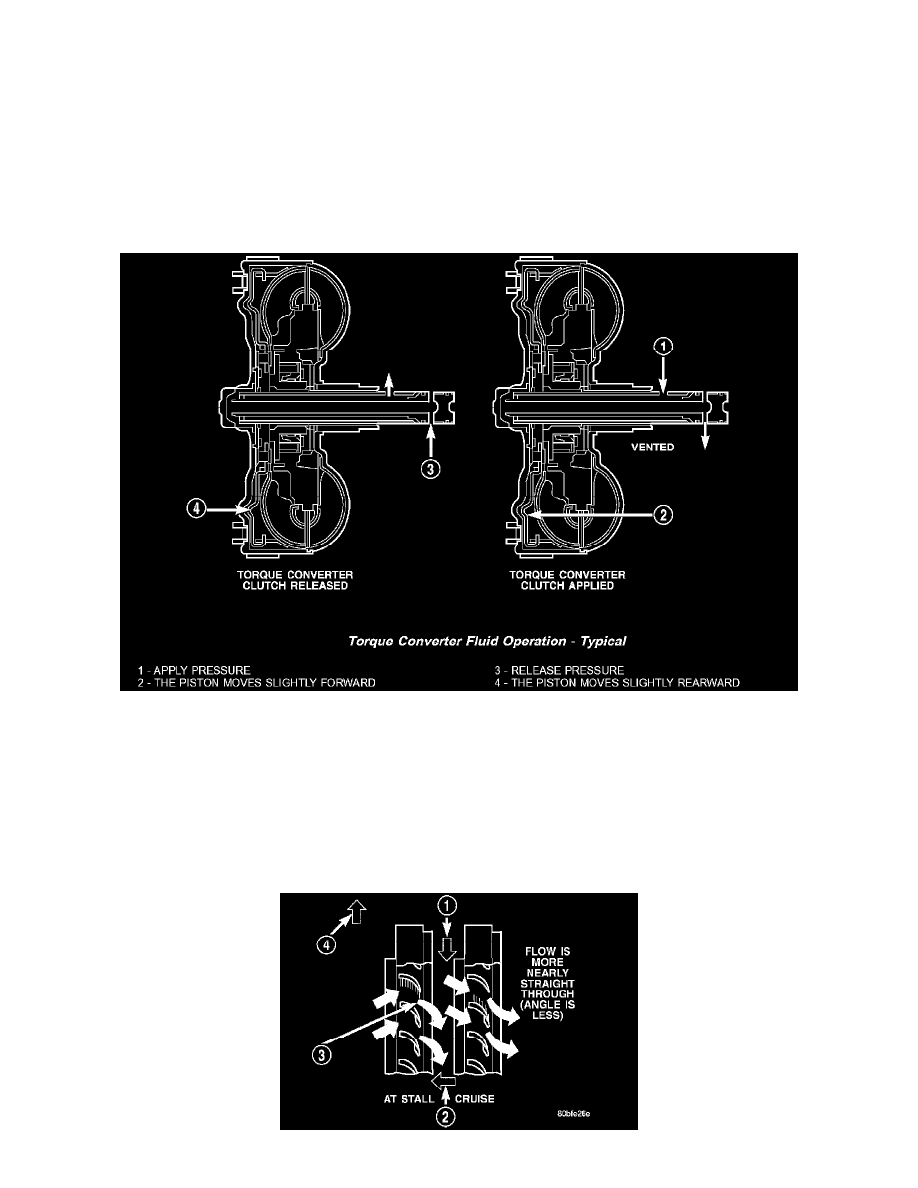Dakota 2WD V8-4.7L VIN J (2005)

In order to reduce heat build-up in the transmission and buffer the powertrain against torsional vibrations, the TCM can duty cycle the L/R-CC
Solenoid to achieve a smooth application of the torque converter clutch. This function, referred to as Electronically Modulated Converter Clutch
(EMCC) can occur at various times depending on the following variables:
-
Shift lever position
-
Current gear range
-
Transmission fluid temperature
-
Engine coolant temperature
-
Input speed
-
Throttle angle Engine speed
OPERATION
The converter impeller (driving member), which is integral to the converter housing and bolted to the engine drive plate, rotates at engine speed. The
converter turbine (driven member), which reacts from fluid pressure generated by the impeller, rotates and turns the transmission input shaft.
TURBINE
As the fluid that was put into motion by the impeller blades strikes the blades of the turbine, some of the energy and rotational force is transferred into
the turbine and the input shaft. This causes both of them (turbine and input shaft) to rotate in a clockwise direction following the impeller. As the fluid
is leaving the trailing edges of the turbine's blades it continues in a hindering direction back toward the impeller. If the fluid is not redirected before it
strikes the impeller, it will strike the impeller in such a direction that it would tend to slow it down.
STATOR
